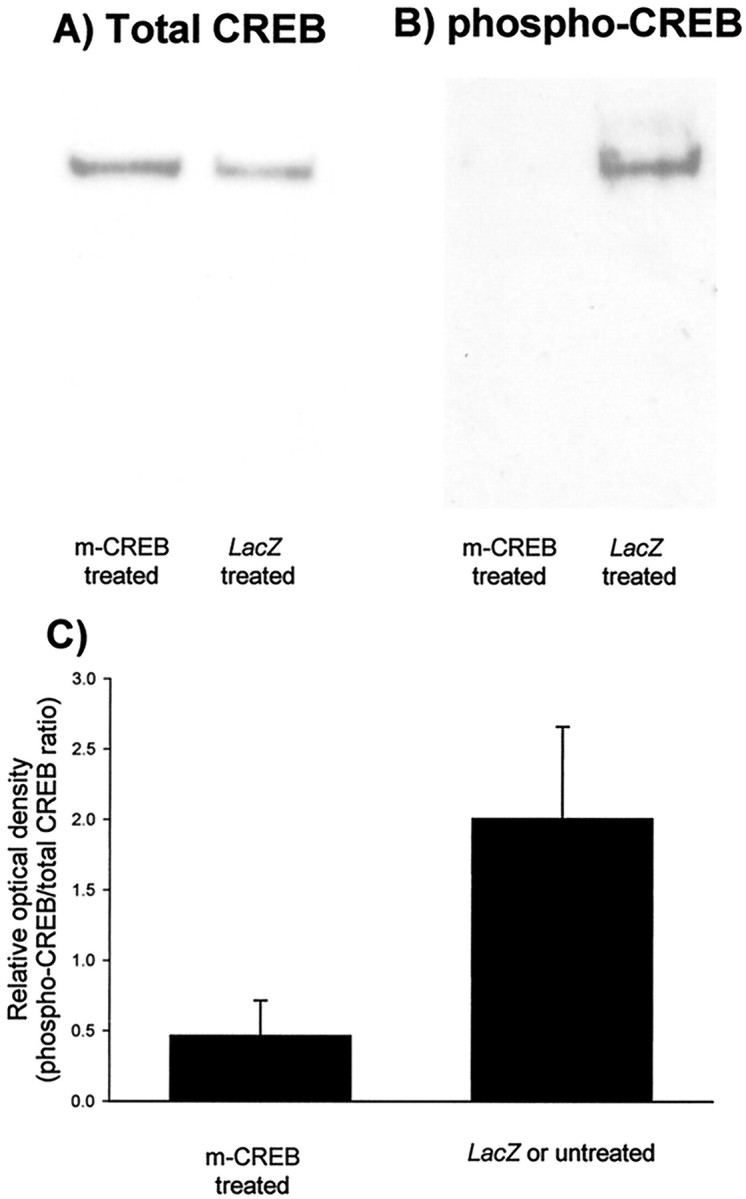Fig. 5.

mCREB competes efficiently with endogenous CREB for binding to the CRE. Pairs of nuclear extracts were prepared from cortices of animals (n = 5) that received injections of HSV–mCREB in one hemisphere and HSV–LacZ(n = 4) or no injection (n = 1) in the other. These animals represent a group separate from those used in physiology and histology. In each nuclear extract, the proportion of nonphosphorylated CREB competing with phospho-CREB for binding to the CRE was assessed by using synthetic nucleotides, as described in Materials and Methods. For each sample, the proportion of phospho-CREB to total CREB (phosphorylated + non-phosphorylated) was determined by Western blot analysis after separation of the protein-DNA complexes.A, Total CREB; B, phospho-CREB. The ratio of pCREB/total CREB determined after densitometric analysis of the Western blots for mCREB- and LacZ-treated samples is represented in C. The results from cortices that received HSV–LacZ or no injection were similar and have been pooled. The ratio of phospho- to total CREB bound to the CRE was significantly less in HSV–mCREB-treated animals (p < 0.05; paired t test) indicating that mCREB competes for CRE binding sites.
